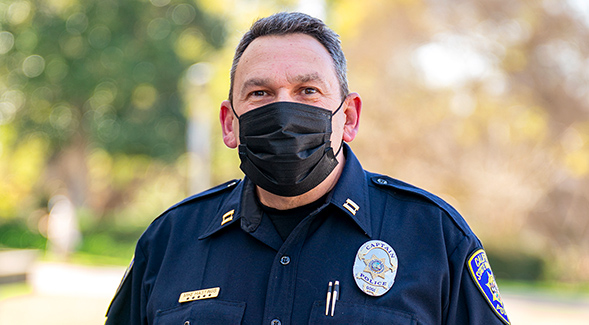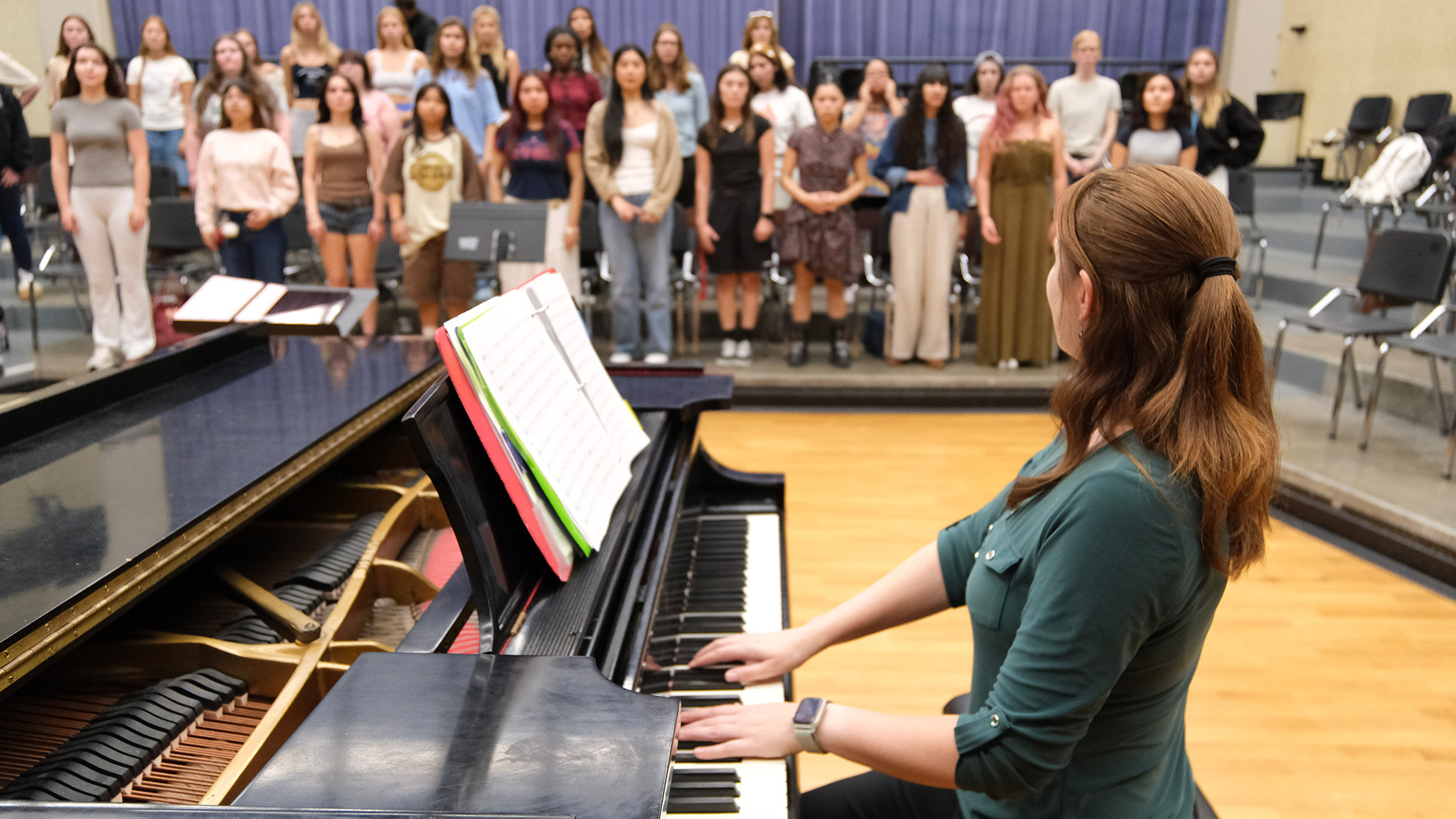Meet Capt. Mike Hastings
The new captain of the San Diego State University Police Department discusses his role and resources for the community.

If you look at the primary job responsibilities for a police department captain, you’ll likely find they are responsible for managing and training patrol officers; managing investigations, backgrounds and recruiting; overseeing the daily operations of the department; and remaining on-call around the clock. At the San Diego State University Police Department (UPD), the person in this role is Capt. Mike Hastings, who joined the department in January with more than 30 years of law enforcement experience.
Hastings began his career as a volunteer reserve police officer with the San Diego Police Department (SDPD) and worked his way up the ranks to his current position at UPD. His storied career includes working in homicide, internal affairs and investigations.
“I first became acquainted with UPD and its officers in 2005 when I was a patrol sergeant at SDPD’s Mid-City Division. I was impressed with their partnership, professionalism, and how the department was community-based,” said Hastings. “To be given the opportunity to serve is an honor that includes taking an oath that should never be broken.”
While he has only been with UPD for five months, Hastings recognizes the important partnership between the university and UPD.
Hastings spoke to the SDSU News Team about his new role, his career and UPD-related resources.
What is your role as captain of UPD, and what do you hope to contribute to the department and to the community you serve?
Chief (Josh) Mays has clearly outlined UPD’s goals and objectives, which include transparency in our operations and commitment to the safety of our university community. I am dedicated to not just being a person in uniform, but also a partner in this endeavor. I strongly believe our internal and external stakeholders deserve a captain that takes a human approach to community policing efforts while emphasizing safety as the paramount goal. My role regarding UPD officers is to ensure they are properly trained, equipped, supervised, and supported. I have confidence in our officers’ integrity and allegiance to SDSU, UPD, and our core values. Overall, I am excited to be in this new role, and I look forward to growing our established partnerships with faculty, staff, students, and the greater community.
Tell us about a defining moment in your career that helped you to determine law enforcement was your calling.
I had never considered a career in law enforcement until one day in high school when two plainclothes officers walked into my philosophy class and began talking about policing as a profession. While this brief introduction to law enforcement as a career happened 38 years ago, I still remember thinking that police officers are just like everyone else, which is something I never forgot. A few years later, I enrolled in a volunteer reserve police officer program through Palomar College. After graduating, I spent my time as a reserve officer with the SDPD, where I learned the importance of volunteering in communities. That interaction in high school planted a seed that eventually led me to my career. I would not change a single thing about my decision.
What training and educational resources does UPD offer to the community, whether in person or virtually?
Prior to the COVID-19 pandemic, UPD held in-person training, workshops, programs, and events to better educate our university community about personal safety and awareness, crime prevention efforts, and how to respond to an active shooter. Another educational resource provided before COVID-19 was Coffee with the Chief, where the campus community was invited to have a cup of coffee with Chief Mays while participating in an open discussion surrounding campus safety at SDSU. While we may not be able to provide all of our typical services right now, we still offer Crime Prevention Through Environmental Design (CPTED) assessments to help mitigate crime by altering the physical environment of an office building or space. Additionally, you can review our safety tips, view our training video and resources, and contact our community resource officer for more information about virtual training opportunities.
What resources are available for the campus community and San Diego community to learn more about UPD?
I encourage everyone to visit the San Diego State University Police Department website for detailed information regarding our divisions and operations, public information and resources, as well as our safety services and programs. We have also outlined the steps we have taken and continue to take to create a community-centered culture, which you can review on our Mission & Vision webpage. To learn more about events and initiatives, please follow our Facebook, Twitter, and Instagram accounts.



